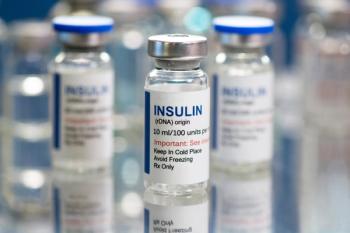
Migraine, Chronic Migraine Associated with Lower Vitamin B12 Levels
Patients with chronic migraines and higher frequencies of pain experienced the lowest vitamin B12 levels compared with patients with less frequent or no headache symptoms.
Migraine follow-ups should include regular measurement of vitamin B12 levels, along with attack frequency and pain severity assessment, according to a study published in Arquivos de Neuro-Psiquiatria, the official journal of the Brazilian Academy of Neurology.
A negative correlation was found between migraine and vitamin B12 levels, suggesting potential benefit from holistic treatment, according to the study authors. Vitamin B12 deficiency and hyperhomocysteinemia are believed to cause endothelial cell damage by increasing the levels of free oxygen radicals, which may be related to the onset of migraine episodes.
Though previous studies have assessed migraines in relation to vitamin B12 levels, the authors of the current study noted a lack of sufficient research around vitamin B12 levels in correlation with pain frequency, especially for patients with migraine without aura.
They conducted the current study to determine the correlation between vitamin B12 levels and migraine attack frequency and pain severity. The study included 127 patients with migraine and 45 healthy controls who presented to Okmeydani Training and Research Hospital between 2019 and 2020.
Migraine attack frequency, duration of attacks, severity of pain, clinical characteristics, and location of headaches were recorded, in addition to demographic characteristics. Pain severity was evaluated using a visual analogue scale (VAS). Vitamin B12 levels below 300 ng/L were considered low.
Patients were divided into 3 groups by attack frequency: infrequent episodic, frequent episodic, and chronic. Patients with 1-3 migraine attacks per month and those having pain 4-14 days per month were included in the infrequent and frequent episodic groups, respectively. Chronic migraine (CM) was identified as headaches lasting over 4 hours on 15 or more days per month for a minimum period of 3 months. A control group of patients with no headache symptoms was also included.
Researchers found that the vitamin B12 levels in patients with migraine were significantly lower than in the control group (227.30 ± 104.72 ng/L vs 278.44 ± 149.83 ng/L; P = .047).
The vitamin B12 levels of patients with CM were also found to be lower than those in patients with less frequent migraine attacks (197.50 ± 69.16 ng/L vs 278.56 ± 147.91 ng/L; P = .019). The ratio of vitamin B12 levels of 300 ng/L and above in patients with CM was lower than that of patients with episodic migraine (P < .05).
A functional vitamin B12 deficiency, represented by elevated urine methylmalonic acid levels, was observed in patients presenting migraine without aura. Notably, a comparison of vitamin B12 levels between patients without aura and the control group did not show any significant difference.
Researchers also noted that vitamin B12 levels were lower in cases with higher pain frequency.
Overall, a negative correlation between migraine and vitamin B12 levels was observed. Vitamin B12 levels in patients with migraines during migraine attack-free periods were found to be lower than the levels in the healthy control group, with the lower levels found among patients with CM compared with patients with episodic migraines.
The authors suggest that a possible cause of vitamin deficiency in chronic migraine cases is the frequent use of analgesics that may disrupt vitamin absorption. However, they encourage further research to explore this relationship, which was not considered in the present study.
They also encourage additional randomized-controlled studies in relation to migraine without aura, as well as controlled studies to determine the direction to which the frequency and intensity of pain will trend when vitamin B12 is replaced.
In light of these findings, the investigators suggest that it is important to consider taking a holistic approach, such as including nutritional supplements, when planning treatments for these patients.
The study has some limitations. The cross-sectional retrospective design and use of a tertiary care facility meant that the study population only represented a small portion of the large migraine population, with a majority of cases comprised of frequent episodic and chronic migraine.
Reference
Özek S U. A study on the correlation between pain frequency and severity and vitamin B12 levels in episodic and chronic migraine. Arq. Neuro-Psiquiatr. 2022;80(6).
Newsletter
Stay informed on drug updates, treatment guidelines, and pharmacy practice trends—subscribe to Pharmacy Times for weekly clinical insights.












































































































































































































